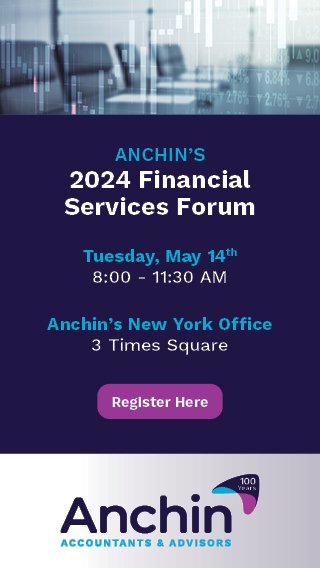Fintech Lessons From a Troubled Bridge Over New York’s Waters
/“Hey, let’s take a tour of the Manhattan Bridge,” said no one ever.
However ancient and unreliable, the Brooklyn Bridge remains the iconic New York river crossing that can do no wrong. Its image, clichéd as it may be, appears on our firm’s website and on millions of postcards, t-shirts and biceps, representing New York’s past and present in all its gritty beauty.
No such love or even awareness exists for the Manhattan Bridge, the Brooklyn Bridge’s northern neighbor by just 1,800 feet.
When construction began on the parallel span in 1901, the general public was led to believe that the technological innovations incorporated into the Manhattan Bridge were going to transform (i.e., disrupt) the bourgeoning suspension bridge industry. The advances stemmed from the work of celebrity engineer Josef Melan (some engineers were rock stars back then too), whose “deflection theory” was the talk of the infrastructure world at the turn of the last century. Melan’s work offered the promise of a stronger and more flexible bridge than anything that had come before it, requiring far less material, manpower and construction time. Better, faster and cheaper was the mantra.
Prominent politicians, including New York’s ambitious mayor George McClellan, Jr. (son of the famous civil war general) and fast-growing corporate juggernauts including the Pennsylvania Steel Corporation and Roebling Wire Works, all threw their muscle behind the Manhattan Bridge. New York City’s growth as the nation’s center of commerce and finance required better access to bedroom communities in Brooklyn — the clogged Brooklyn Bridge needed a companion and The Manhattan Bridge was a no-brainer solution. Even The New York Tribune said so.
The beautiful dusty blue bridge opened in 1908 and functioned fairly well until subway trains began running across its flanks in 1915. That’s when trouble hit the fan as the bridge shifted like a seesaw every time a subway crossed. The grotesque screeching sound that emanated from the subway wheels as they rumbled across the span added further insult to injury.
100 years and a billion dollars worth of repairs later, the bridge remains a hot mess. It manages to function, but it still swoons under the pressure from the weight it bears and the subway screeching remains in full force to this day (ask anyone who spends time in the Brooklyn neighborhood of DUMBO). There is simply no getting around the fact that the bridge was poorly planned, hyped and rushed to completion by overconfident engineers and underinformed boosters.
Which brings me to fintech.
We think fintech has the potential to become a transformative bridge to connect people, companies, governments and other institutions to the financial services they need. In so many areas — payments, blockchain and digital currencies, online marketplaces, asset/personal financial management, remittances and capital markets tech, to name a few — exciting things are happening. These developments, being hatched by both start-ups and larger firms alike, are showing great promise.
But recently, we’ve become concerned that as fintech grows, the obstacles to financial innovation will grow too. And while some friction is to be expected in any area as hot as fintech, we don’t want things to get messed-up. Here are our main reasons for concern:
· Disruptor hubris. If we had a dollar for every time we’ve reheard the metaphor comparing banks to dinosaurs or to the taxi services being put out of business by Uber, we’d have enough to own a unicorn. Underpinning this attitude is the idea that fintech start-ups will somehow obliterate the incumbent financial services industry in the next few years. We think that this unlikely because fintech isn’t “another sector.” And while there will continue to be some “us against them” tension, the divisiveness is unwarranted; incumbents and start-ups are part of the same family. Fintech start-ups seek to satisfy the same needs as incumbent firms and while free from legacy encumbrances, many have too few customers, too much confidence and too little respect for the regulatory environment in which they operate. Over time, promising companies based on solid technologies could falter as a result.
· Fintech is becoming too hyped in certain areas. Even though venture funding cooled in Q4, 2015, deal activity remains high, as do valuations, especially on the consumer side of fintech. Accelerators, incubators and now start-up factories have cropped-up to participate in the global fintech boom. Many of these initiatives are crucial, since they compensate for the lack of financial services innovation in the years leading up to the financial crisis. Unfortunately, half-baked business models, me-too companies and fintech “tourist” investors looking for a quick trade seem to be on the rise as well.
· Some large incumbents are riding the fintech wave without a plan. Just as politicians, commissioners and contractors jumped on the Manhattan Bridge project over a century ago, it now seems that every major incumbent is getting fintechier. Although some large banks, payments companies, insurers and asset managers are making solid progress, others seem to be grasping. One reason may have to do with the boards overseeing large firms, which often consist of prominent financial and corporate executives whose last personal brush with technology involved a Commodore VIC-20. With some notable exceptions, you’d be challenged to find many large firms represented by directors who have more than a topical understanding of cloud computing, enterprise software or artificial intelligence, let alone how these innovations can reshape the financial services world. Would you want to ride across a bridge whose construction was overseen by non-engineers?
If you find yourself in lower Manhattan or Brooklyn this Spring, we encourage you to reflect upon the Manhattan Bridge in between your admiring gazes at that other bridge. And when you do, and especially if you care about financial innovation, keep in mind that a solid foundation is the most important thing in building anything new and meaningful. Bridge or otherwise.







